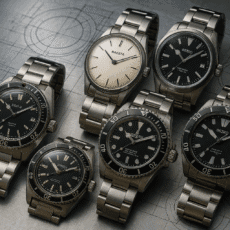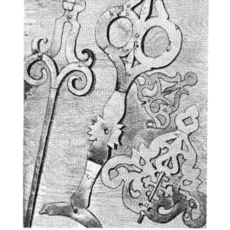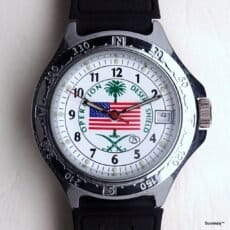Introduction: The Vostok Titanium Case Phenomenon
The phrase “Vostok titanium” refers to one of the most unique and sought-after production runs in Russian horology of the 1990s. Especially, the Amphibia titanium models are distinguished by their larger, rounder cases, noticeably lighter weight, and physical properties distinct from standard stainless steel Vostok watches. This article offers a rigorous technical analysis of which titanium alloy was likely used for Vostok titanium cases, drawing from historical context, metallurgical data, and a comparative study of available Soviet and Russian materials from the era.
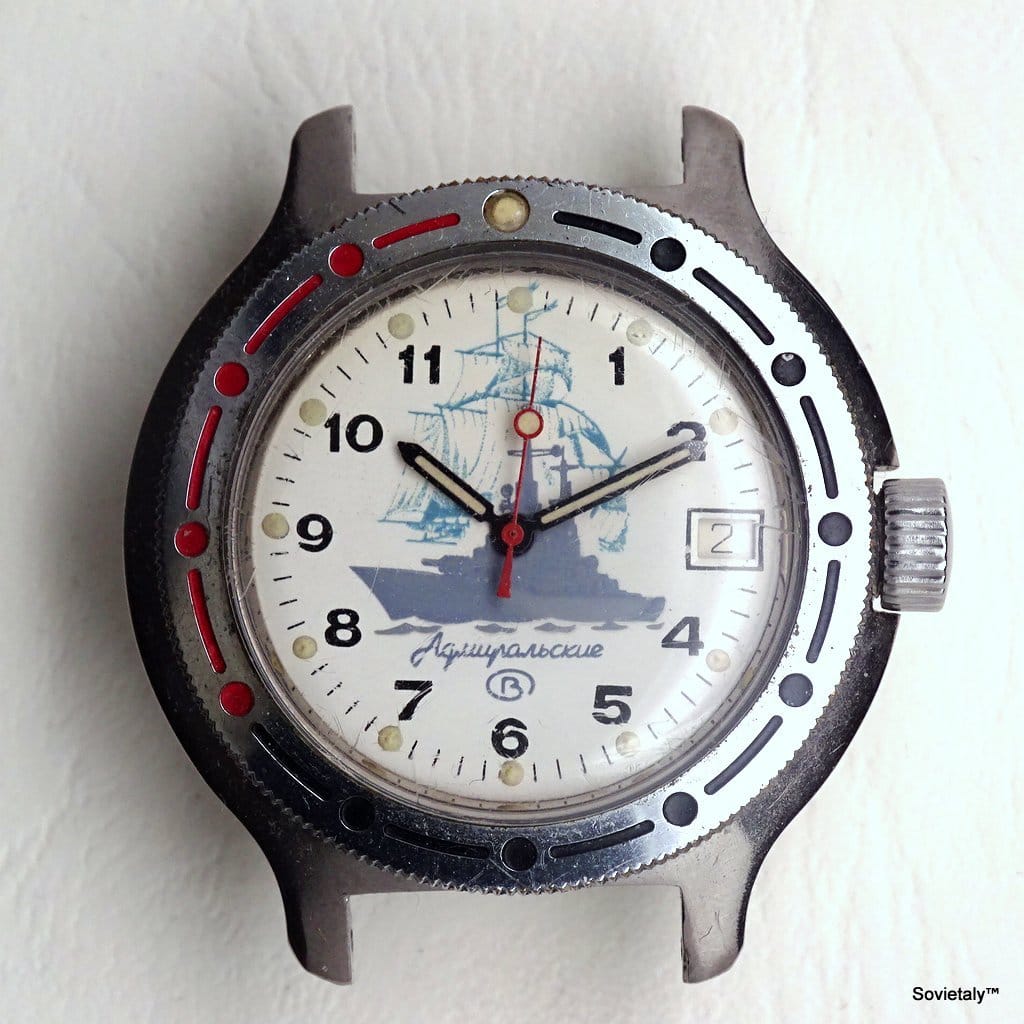
1. Historical and Industrial Context: Why a Series of Vostok Titanium?
Between 1992 and 1995, Chistopol Watch Factory (Vostok) experimented with a limited series of “titanium” watches. This was enabled by the post-Soviet market conditions:
- Military and aerospace stockpiles were liquidated, providing a surplus of commercial VT1-0 titanium in bars, sheets, and tubes.
- Product innovation needs: Vostok sought to diversify its offering and target export markets with Amphibia titanium and select Komandirskie models.
- Budget constraints: The economic crisis of the time made it impossible to invest in new production lines or use high-grade alloys.
Production was not mass-market but rather a restricted run, likely outsourced to specialist workshops equipped for titanium work.
2. Metallurgical Analysis: Which Alloy for Vostok Titanium?
A) Commercial Titanium VT1-0 (ASTM Grade 1–2): The Most Plausible Option
Key technical data:
- Chemical composition (GOST 19807-91):
- Titanium (Ti): 98.6–99.7%
- Iron (Fe): ≤0.3%
- Silicon (Si): ≤0.1%
- Oxygen (O): ≤0.3%
- Carbon (C): ≤0.07%
- Density: 4.5 g/cm³ (compared to 7.9 for stainless steel 12X18H10T)
- Brinell hardness: 131–163
- Mechanical properties:
- Tensile strength: 240–350 MPa
- Modulus of elasticity: 105–120 GPa
- Corrosion resistance: excellent, both in freshwater and saltwater
- Magnetic behaviour: completely non-magnetic
- Workability: good, especially relative to higher-grade titanium alloys
Why is VT1-0 plausible for Vostok titanium?
- Broad historical availability in Russia during the 1990s (Wikipedia RU – VT1-0, MatWeb VT1-0)
- Lower cost than aerospace alloys like VT6 (Ti-6Al-4V)
- Compatible with existing manufacturing lines
- Physical properties (reduced weight, matte colour, non-magnetic) fully match the original Vostok Amphibia titanium pieces seen by collectors
B) Other Possible Alloys (less likely)
VT6 (Ti-6Al-4V, ASTM Grade 5)
- Composition: Ti ≈ 90%, Al ≈ 6%, V ≈ 4%
- Density: 4.43 g/cm³
- Hardness: 300–350 HB
- Usage: aerospace sector, rarely seen in civilian watchmaking
- Downsides: much harder to machine, higher cost, highly unlikely for 1990s Russian consumer products
Titanium-stabilised stainless steels (e.g., 12X18H10T)
- Density: 7.9 g/cm³
- Note: Used for classic steel models, but not for “titanium” cases; weight and magnetic properties are very different.
3. Technical Comparison Table: Vostok Titanium, Amphibia Titanium, and Steel
| Material | Density (g/cm³) | Hardness (HB) | Magnetic | Corrosion resistance | Workability | Colour | Composition |
|---|---|---|---|---|---|---|---|
| VT1-0 (Vostok titanium) | 4.50 | 131–163 | None | Excellent | Good (with basic machines) | Matte grey | Ti ≥98.6%, Fe, Si, O, C |
| VT6 (Ti-6Al-4V) | 4.43 | 300–350 | None | Excellent | Difficult | Pale grey | Ti+Al+V |
| 12X18H10T (steel) | 7.90 | 150 | Slight | Very good | Excellent | Bright silver | Fe+Cr+Ni+Ti |
4. How to Verify a Vostok Titanium Case
Non-destructive practical tests
- Weight and density:
- Calculate density by weighing the empty case and measuring volume.
- Density ≈4.5 g/cm³ = titanium; ≈7.9 g/cm³ = steel.
- Magnet test:
- Pure titanium (VT1-0) is totally non-magnetic.
- Visual aspect:
- Titanium cases develop a characteristic matte patina over time, unlike the persistent shine of stainless steel.
Laboratory analysis
- XRF spectrometry:
- Precise chemical analysis for Ti, Fe, Al, V, etc.
- Technical info: Olympus XRF Analysis
- SEM/EDS microscopy:
- Microstructural and chemical point analysis, for professional labs.
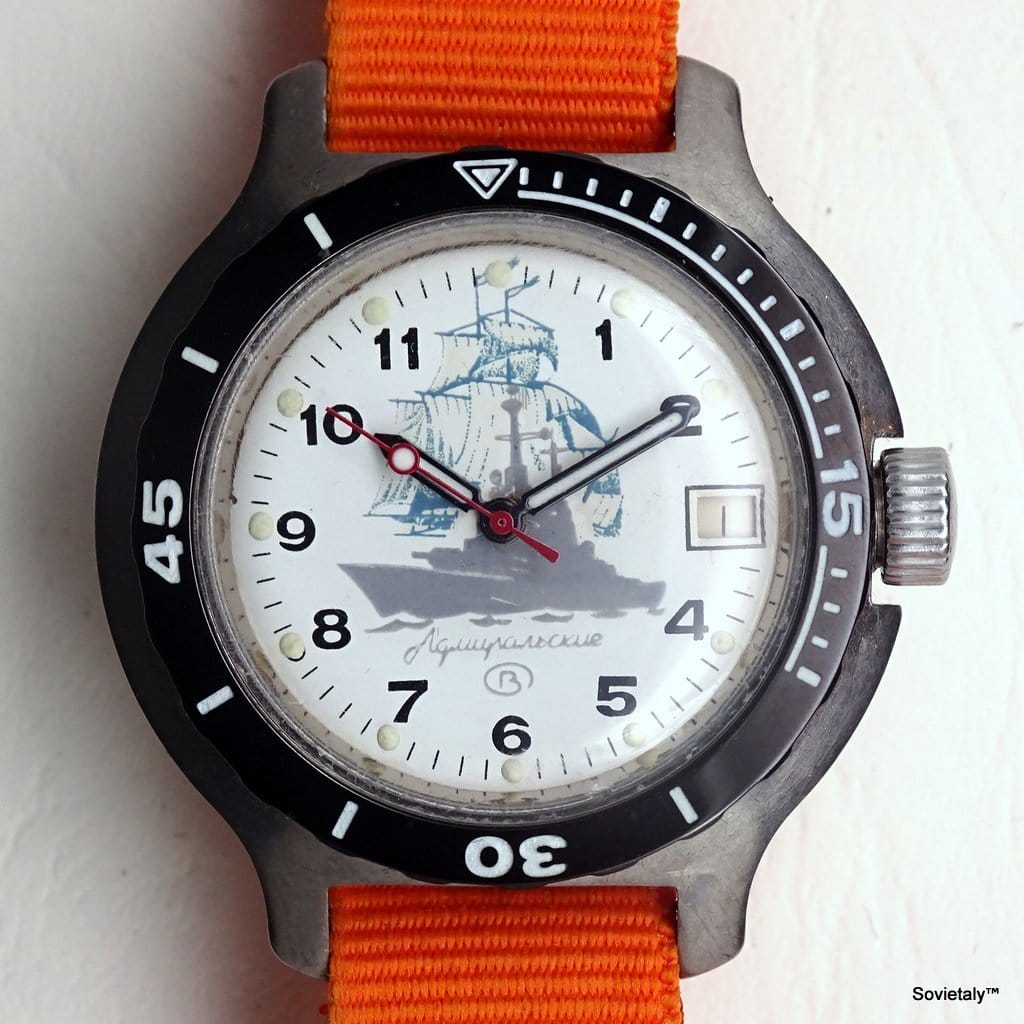
5. Why VT1-0 Is the Most Probable Choice for Vostok Titanium
- Availability: widely stocked in post-Soviet Russia
- Manufacturing compatibility: no need for new machines
- Cost: lower than high-performance alloys
- Empirical results: all physical characteristics observed in Vostok Amphibia titanium match VT1-0 data
6. References, Technical Sources, and Bibliography
- GOST 19807-91 – Deformable Titanium (RU)
- MatWeb VT1-0 Data Sheet
- Wikipedia RU – VT1-0
- GOST 26492-85 – VT6 (RU)
- Olympus: XRF for Titanium Alloys
- Watchuseek: Vostok Amphibia Titanium Case Discussion
Conclusion: The Technical and Historical Value of Vostok Titanium
Considering the historical data, physical properties, metallurgical documentation and empirical analysis, the most probable alloy for the “Vostok titanium” and “Amphibia titanium” cases produced between 1992 and 1995 is commercial VT1-0 titanium (ASTM Grade 1–2).
This solution was the only one truly sustainable in the Russian context of the time: light, resistant, cost-effective, and manufacturable with standard equipment.
For those wishing to authenticate a Vostok titanium, testing by weight, magnetism, or—ideally—XRF spectrometry is the most reliable method.
Do you own a Vostok Amphibia titanium and want to contribute technical test data? Get in touch or share your experience in the comments!
Meta Description SEO (159 char)
Technical deep dive into Vostok titanium and Amphibia titanium watch cases. Alloy, history, properties and verification methods. Learn more at sovietaly.it.
If you need a more concise summary, a table for download, or a FAQ snippet for Rank Math, just ask!
Contents
- 1 Introduction: The Vostok Titanium Case Phenomenon
- 2 1. Historical and Industrial Context: Why a Series of Vostok Titanium?
- 3 2. Metallurgical Analysis: Which Alloy for Vostok Titanium?
- 4 3. Technical Comparison Table: Vostok Titanium, Amphibia Titanium, and Steel
- 5 4. How to Verify a Vostok Titanium Case
- 6 5. Why VT1-0 Is the Most Probable Choice for Vostok Titanium
- 7 6. References, Technical Sources, and Bibliography
- 8 Conclusion: The Technical and Historical Value of Vostok Titanium
- 9 Meta Description SEO (159 char)

